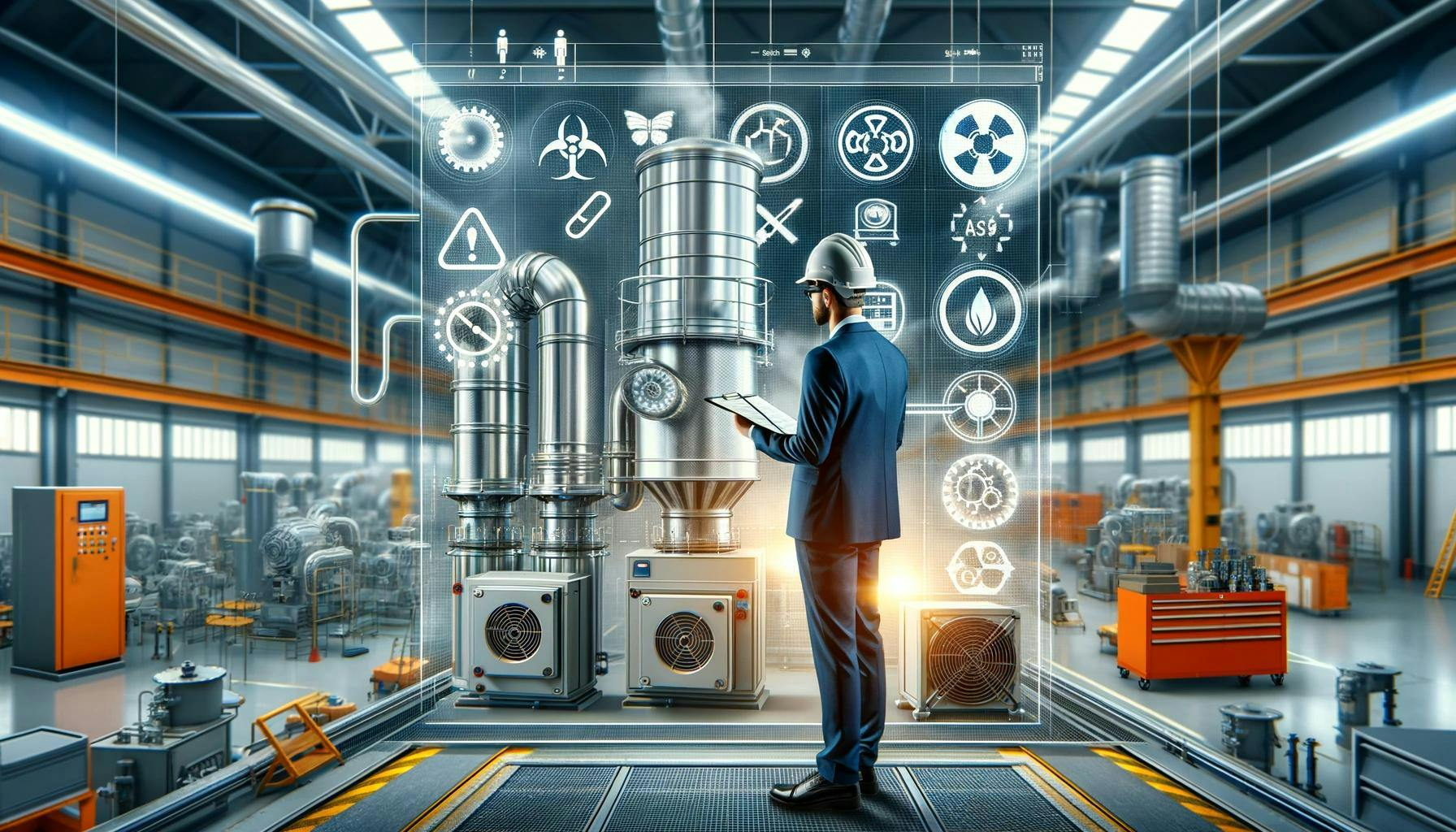
Local Exhaust Ventilation Regulations in the UK
When it comes to mitigating hazardous substances in the workplace, Local Exhaust Ventilation (LEV) systems play a pivotal role. To ensure the safety and well-being of employees, it's crucial for businesses across the UK to comprehend and apply the local exhaust ventilation regulations effectively. As a country with stringent health and safety laws, the UK has established a comprehensive set of guidelines that industries must adhere to. Let's delve into the intricacies of these regulations and understand how adherence can be both a legal requirement and a commitment to a safer work environment.
What is Local Exhaust Ventilation?
Local Exhaust Ventilation systems are essential in removing airborne contaminants such as dust, mist, fumes, vapour, or gas from a specific location, particularly the point of generation, to prevent them from being inhaled by workers. A properly designed LEV system captures the contaminant at its source, transports it through ductwork, and releases it safely into the atmosphere after adequate filtration and treatment.
Comprehending the Regulations
In the UK, Local Exhaust Ventilation regulations are mandated by the Health and Safety Executive (HSE). These regulations come under the Control of Substances Hazardous to Health (COSHH) 2002. COSHH is a statutory law that provides the basis upon which British employers are obligated to either prevent or reduce their workers' exposure to hazardous substances.
Regulation 7: LEV
Under COSHH, Regulation 7 specifically highlights the use of control measures. It states that the employer shall ensure that:
The chosen control measures are adequately maintained and are in efficient working order and in good repair.
Technical measures are taken to reduce the emission of substances into the workplace.
Effective measures are in place to ensure that the workplace is well ventilated by natural or mechanical means.
Regulation 9: Maintenance, Examination, and Testing of LEV Systems
Under COSHH, Regulation 9 sets out the standards for LEV systems, requiring that:
All systems must be properly maintained and tested regularly to ensure their continued effectiveness.
Employers must ensure thorough examination and testing of any LEV system at specific intervals — typically every 14 months, depending on the substances being handled and the processes in use.
Employers are also obliged to keep records of all LEV inspections, tests, and repairs for a minimum of five years.
Practical Steps to Ensure Compliance
The key to compliance lies in understanding the specific requirements tailored to the operations of the facility where the LEV system is employed. Here are the essential steps businesses across the UK should take:
Assessment of Risks
An initial risk assessment should be carried out to determine the type of LEV system that needs to be installed. This involves identifying the hazards present, considering the activities carried out, and understanding the level of exposure.
Installation and Design of the LEV System
The design and installation of LEV systems must cater to the specific needs of the operations they will serve. It's critical that these systems are not just "off-the-shelf" but are designed considering the particular contaminants and workplace layout.
Regular Maintenance and Testing
To stay in line with regulations, LEV systems must undergo regular maintenance and thorough testing. All findings from these tests should be rigorously documented and readily accessible for inspection.
Training and Instruction
LEV systems can only be as effective as the people operating and maintaining them. Therefore, adequate training must be provided to ensure that employees understand how to use the equipment properly and recognise its importance.
LEV System Services with WBT Services Ltd
Though this article makes minimal reference to our client, it's worth noting that companies like WBT Services Ltd offer comprehensive services related to LEV systems, including design, installation, and maintenance, ensuring that industries across the UK can comply with the stringent local exhaust ventilation regulations. For businesses looking for such services, more information can be found at WBT Services Ltd.
Conclusion
Local exhaust ventilation systems are more than just an engineering solution; they represent an employer's commitment to creating a clean and safe working environment. The UK's regulatory framework, while strict, is designed to foster the health and wellbeing of the workforce, and adherence to these regulations is not optional but mandatory. Understanding and complying with LEV regulations is essential for businesses that value the safety of their employees and wish to operate without legal ramifications.
Adherence to the Local Exhaust Ventilation regulations will not only protect employees but will also safeguard businesses from potential legal repercussions. It's imperative that employers remain vigilant, proactive, and seek expert guidance in this technical and highly regulated area. By doing so, they ensure their workforce remains productive, healthy, and that their operations are sustainable in the long term.